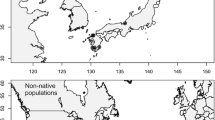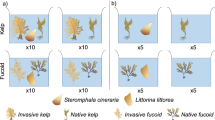Abstract.
Tissues within individual plants can vary greatly in the strength of their constitutive (i.e., permanent) and induced resistance to herbivores. Optimal defense theory predicts that defenses should be allocated among tissues in proportion to the value of the tissues to the plant and the tissue-specific risk of attack by grazers. We examined the relationship between tissue value and defense in the highly-differentiated brown seaweed Sargassum filipendula. Tissues within S. filipendula varied widely in palatability to the herbivorous amphipod Ampithoe longimana, with younger tissues preferred over older tissues and blades preferred over stipes. Old stipes (at the base of the plant), which linked the other tissues to the seafloor and were thus the most valuable tissue to the plant, were defended constitutively and resisted amphipod grazing by virtue of their toughness rather than via deterrent chemistry. Induction of resistance as a result of amphipod grazing occurred only in the top stipes, which contain the meristematic tissue responsible for future growth. Induction in the top stipes was not due to toughness or other structural properties, as the unpalatability persisted when top stipes were dried, ground to a fine powder, and reconstituted into an agar matrix. This suggests that the induced resistance to grazing resulted from an increase in chemical defenses. The demonstration of constitutive or induced defenses in only the more valuable tissues of the seaweed is consistent with predictions of optimal defense theory. Our finding of induction due to mesograzer (amphipod) feeding is also consistent with the notion that it is these small, more sedentary, herbivores that are most likely to induce defenses in seaweeds.
Similar content being viewed by others
Author information
Authors and Affiliations
Corresponding author
Additional information
Electronic Publication
Rights and permissions
About this article
Cite this article
Taylor, R.B., Sotka, E. & Hay, M.E. Tissue-specific induction of herbivore resistance: seaweed response to amphipod grazing. Oecologia 132, 68–76 (2002). https://doi.org/10.1007/s00442-002-0944-2
Received:
Accepted:
Published:
Issue Date:
DOI: https://doi.org/10.1007/s00442-002-0944-2




